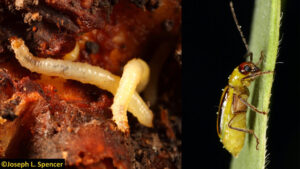Soil-Residual Soybean Herbicides Applied Postemergence
Soil-residual herbicides are important components of integrated weed management programs. Reducing the number of weeds exposed to foliar-applied herbicides helps reduce the selection intensity for weeds to evolve resistance to foliar-applied herbicides. Residual herbicides applied with postemergence soybean herbicides also can reduce the need for a second postemergence application. However, simply applying a soil-residual herbicide does not guarantee the product will provide the desired level or duration of weed control. Many edaphic and environmental factors influence the level of weed control achieved by soil-residual herbicides.…






 Register for today’s 11am central Webinar
Register for today’s 11am central Webinar